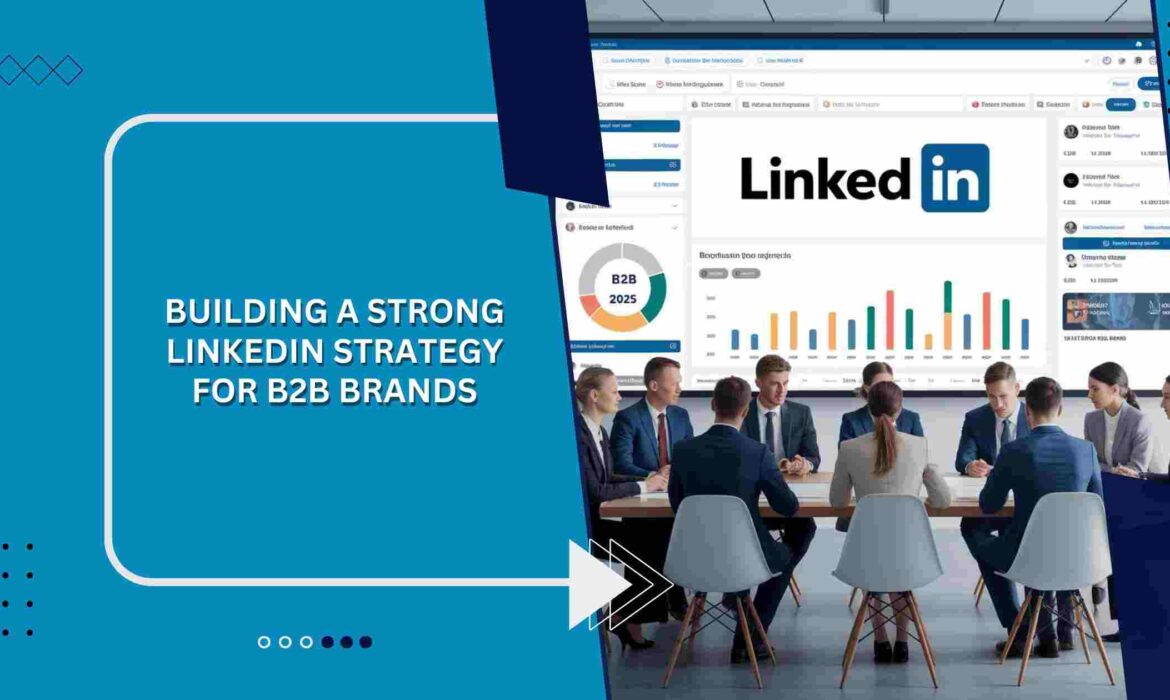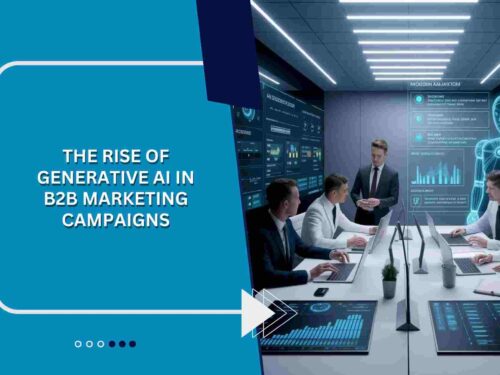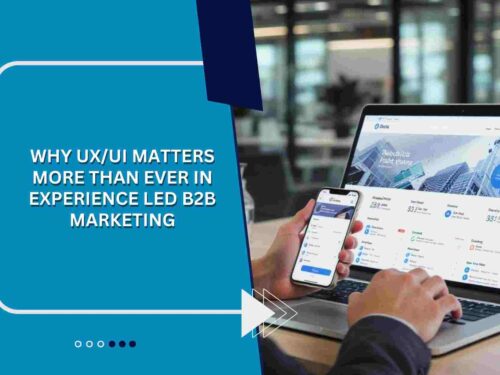If you’re a B2B marketer, you’ve probably noticed something about LinkedIn it’s no longer just a place to post job updates or connect with old colleagues. It has transformed into the heartbeat of B2B marketing. Every day, decision-makers, industry leaders, and professionals spend time scrolling, reading, engaging, and learning. And if your brand isn’t showing up there with the right message, you’re missing out on conversations that could directly influence revenue.
That’s where a strong LinkedIn Strategy comes in.
For B2B brands, LinkedIn isn’t just another social media platform it’s a credibility builder, a lead generation engine, and a storytelling stage. But here’s the truth: blasting out company news or generic posts won’t get you far. To stand out in 2025, your strategy has to be intentional, consistent, and human. Let’s unpack how you can do just that.
Why LinkedIn Matters More Than Ever for B2B
Think about the last time you made a big purchase decision in business. Chances are, you didn’t just look at a product page and click “buy.” You researched. You read thought leadership articles. You compared solutions. You looked for signs of trust.
That’s exactly what your prospects are doing on LinkedIn.
A LinkedIn Strategy gives your brand a place in that decision-making process. Whether it’s through an insightful article, a helpful infographic, or a post that sparks conversation, LinkedIn keeps your company visible when buyers are looking for answers.
And the numbers back this up: B2B marketers consistently report that LinkedIn is their top channel for quality leads. Why? Because the people on the platform are there for business. They’re open to networking, partnerships, and solutions that make their jobs easier.
Step 1: Start With a Company Page That Reflects Who You Are
Your LinkedIn Company Page is more than just a profile it’s your first impression. When someone lands there, they should immediately understand what you do, who you help, and why you matter.
Here’s how to get it right:
- Banner & Logo That Stand Out: Think of your banner as your storefront sign. Is it visually aligned with your brand? Does it communicate your focus?
- A Tagline That Speaks Value: Instead of saying “We’re a leading provider of solutions,” try something more human like “Helping B2B brands simplify their supply chains.” Clear, simple, benefit-driven.
- An ‘About’ Section That Tells a Story: Don’t just list services. Talk about your mission, your values, and the problems you solve. Storytelling connects more than jargon.
- Showcase Pages for Segments: If you serve multiple industries, create showcase pages so content feels personalized.
A strong page sets the stage for the rest of your LinkedIn Strategy.
Step 2: Share Content That Feels Human, Not Corporate
If there’s one mistake most B2B brands make, it’s being too formal. Yes, LinkedIn is professional, but that doesn’t mean your content has to be stiff. People connect with people even in business.
Content that works best for LinkedIn tends to have three things in common:
- It educates. Buyers want insights they can use right away.
- It sparks conversation. A thought-provoking question or bold opinion invites engagement.
- It shows personality. Whether it’s behind-the-scenes posts or stories from leadership, authenticity beats corporate-speak.
Some content formats to weave into your LinkedIn Strategy include:
- Short storytelling posts: For example, a quick story of how your client solved a problem.
- Video snippets: Think CEO insights, client testimonials, or “day in the life” clips.
- Infographics and data snapshots: Perfect for decision-makers who want quick insights.
- Polls: A fun yet powerful way to engage your audience in real-time.
Step 3: Build Relationships, Not Just Follower Counts
Here’s the thing: numbers don’t close deals, relationships do.
It’s tempting to focus on growing followers, but the magic of a LinkedIn Strategy lies in engagement. Comment on industry posts. Congratulate people on their milestones. Jump into relevant conversations. Respond when someone interacts with your posts.
Remember, decision-makers are more likely to engage with brands that feel approachable. Don’t hide behind formality show the human side of your business.
Step 4: Use Analytics to Fine-Tune Your Approach
One of the most underrated parts of a LinkedIn Strategy is analyzing what’s working. LinkedIn provides a wealth of data that tells you not just how many people are seeing your posts, but how they’re interacting.
Metrics worth tracking:
- Engagement rate (likes, comments, shares)
- Impressions vs. clicks
- Follower growth trends
- Which content formats perform best
For example, if you notice videos consistently outperform static posts, double down on video. If case studies drive more clicks than generic posts, create more of them. Your strategy should evolve with your audience’s behavior.
Step 5: Supercharge Reach With LinkedIn Ads
Organic reach on LinkedIn is powerful for building trust and community, but it has its limits. Even the most engaging post can only reach so far within your follower base. That’s where LinkedIn Ads come in giving your brand the ability to break through those barriers and put your message directly in front of the decision-makers who matter most.
With advanced targeting options, LinkedIn lets you zero in on highly specific audiences. Whether you want to reach CMOs in SaaS companies, HR leaders in Fortune 500 firms, or procurement managers in global manufacturing businesses, LinkedIn Ads ensure your content lands in front of the right people, not just anyone scrolling by.
Here are some practical ways to make ads a strong part of your LinkedIn Strategy:
- Use Sponsored Posts to Scale Visibility: If you notice a piece of organic content is performing well getting comments, shares, or sparking meaningful conversations that’s a clear sign it resonates with your audience. Sponsoring that post allows you to push it beyond your followers and extend its impact to new, relevant professionals.
- Leverage Sponsored InMail (Message Ads): Personalized outreach through Sponsored InMail can feel like a direct invitation instead of a cold pitch. Whether you’re inviting prospects to a webinar, demo, or industry event, tailored messaging creates a more conversational entry point that feels personal and relevant.
- Experiment With LinkedIn Lead Gen Forms: Instead of sending prospects to an external landing page, use LinkedIn’s native lead gen forms. They auto-populate with the user’s profile data, making the sign-up process seamless. This frictionless experience increases conversions and ensures you’re capturing high-quality leads with accurate details.
- Run A/B Testing on Creatives and Copy: Don’t assume you’ll get the best results on the first try. Test variations of ad visuals, headlines, and calls-to-action to see what performs best. For example, one version might highlight cost savings while another emphasizes efficiency data will show you which message resonates more with your target audience.
Think of LinkedIn Ads not as a shortcut but as an amplifier. They don’t replace your organic efforts they multiply them. When paired with strong organic engagement, ads can push your LinkedIn Strategy to the next level by ensuring your most valuable content and offers reach the exact decision-makers you want to influence.
Step 6: Keep an Eye on 2025 Trends
LinkedIn isn’t static it keeps evolving, and so should your strategy. In 2025, here are the trends worth leaning into:
- AI-powered personalization to serve content tailored to specific personas.
- Interactive formats like carousels, polls, and live streams to boost engagement.
- Employee branding, where your team becomes your strongest brand advocates.
- ABM campaigns targeting specific high-value accounts with precision.
- CRM integrations making it easier to track LinkedIn leads directly in sales pipelines.
Staying ahead of these trends ensures your LinkedIn Strategy doesn’t just keep up but stays ahead of competitors.
The Human Side of LinkedIn That Brands Often Forget
At its core, LinkedIn is about connection. Behind every “B” in B2B is a human being with challenges, goals, and ambitions.
This means your strategy should never just be about pushing content. It should be about sparking conversations, building trust, and showing empathy. Share stories of your employees, highlight customer successes, celebrate milestones these are the posts that resonate most deeply.
When your audience feels they know the humans behind your brand, your LinkedIn Strategy stops being a marketing plan and starts being a community builder.
If you’re serious about building a LinkedIn Strategy that drives real B2B impact more leads, stronger relationships, and lasting authority you don’t have to do it alone. Our team at Acceligize specializes in helping brands like yours create LinkedIn strategies that don’t just generate likes but generate business.




